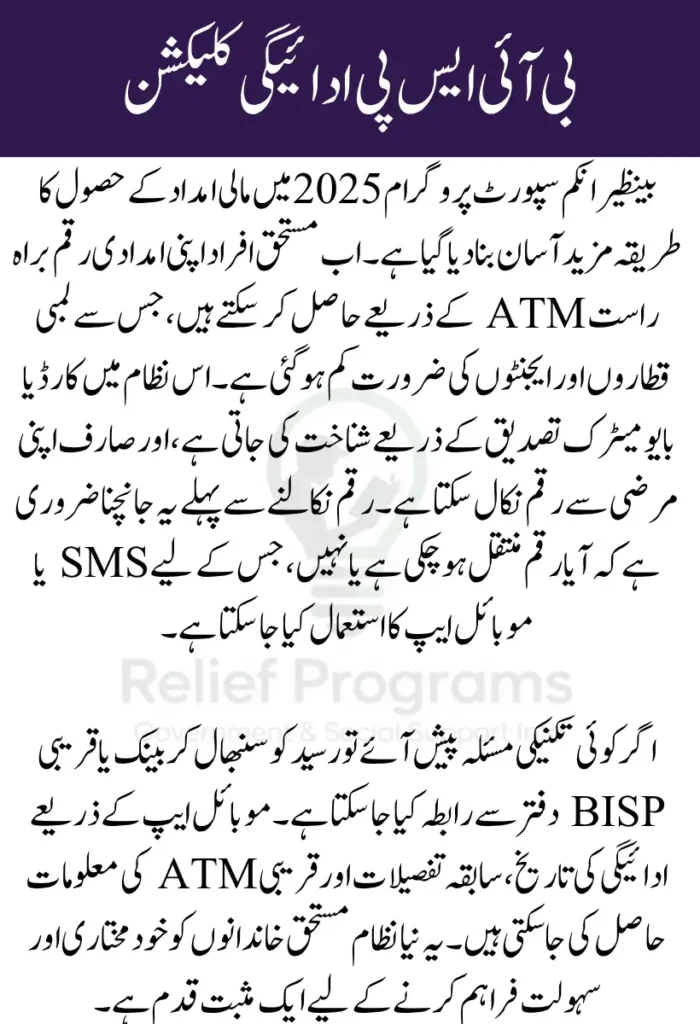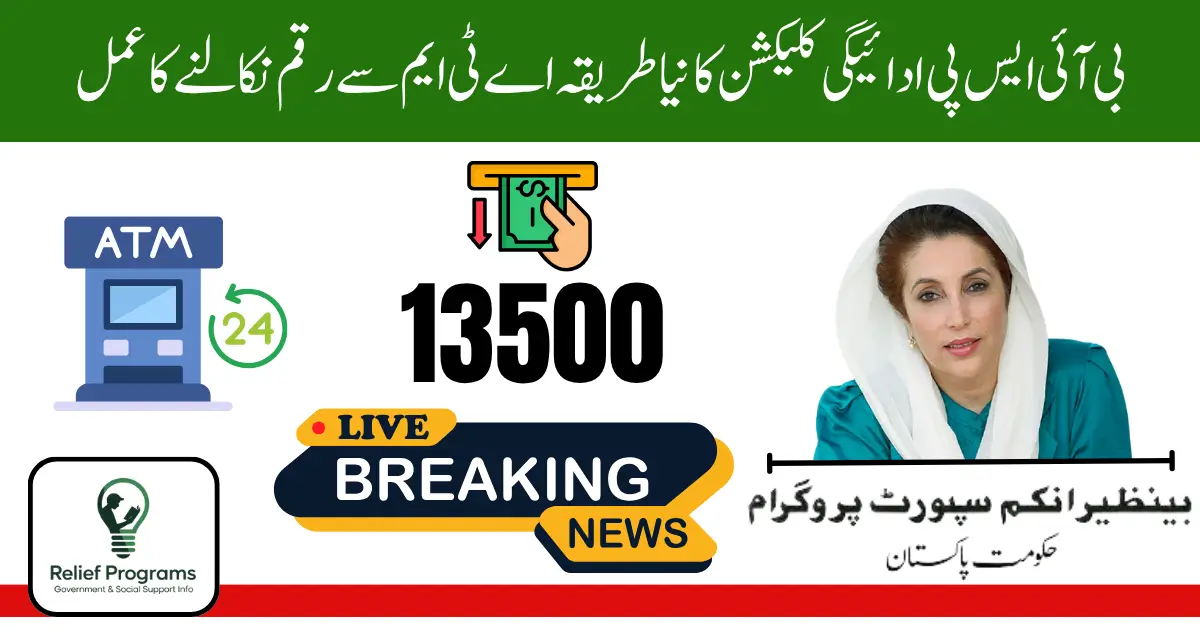BISP Payment Collection in 2025 has been made significantly easier through the introduction of ATM withdrawals, giving beneficiaries more independence and control over accessing their financial aid. The Benazir Income Support Program (BISP) continues to evolve to meet the needs of low-income families across Pakistan, using technology to reduce long waits and eliminate middlemen from the payment process.

This shift to digital collection empowers families with more control over when and how they access their funds, reducing dependency on field agents or long queues at cash centers. With a bit of guidance and awareness, beneficiaries can now use basic banking tools to manage their assistance safely and confidently.
For More Information: HBL Home Loan Scheme 2025 – Step-by-Step Guide
BISP Payment Collection 2025
In the past, most people relied on BISP cash agents or designated payment centers, often waiting in line for hours. But now, with the government’s push towards digitization, new methods have been introduced to simplify BISP Payment Collection. These include:
- Direct ATM withdrawals via partner banks
- Biometric verification systems for increased security
- Mobile app access for checking payment status and transaction history
These upgrades are intended to provide more accessibility, particularly in rural and underdeveloped areas where banking options have traditionally been limited.
Program Overview
| Section | Key Points |
| New Collection Methods | ATMs, biometric systems, mobile app |
| Check Before Visiting | Use CNIC via SMS or app |
| ATM Location | HBL, Bank Alfalah, BISP center info |
| Withdrawal Process | Card or fingerprint → CNIC → Cash |
| Safety Tips | Avoid sharing info, use ATMs in safe locations |
| Technical Issues | Save receipts, contact helplines or BISP offices |
| BISP App Use | Track payments, locate ATMs, get updates |
| Common Challenges | Fingerprint errors, cash shortages, menu confusion |
| Final Note | Secure, efficient system with practice and patience |
Check Your Payment Status Before Going to an ATM
Before making the trip to an ATM, make sure your payment has been released. This step prevents unnecessary visits and wasted time. You can confirm your status by:
- Sending your CNIC number to the official BISP code via SMS
- Using the BISP mobile app to check your current balance
- Visiting a nearby BISP center if you need in-person assistance
Getting confirmation beforehand ensures that your withdrawal process goes smoothly.
For More Information: Ehsaas Nayee Zindagi Program Eligibility
How to Find an ATM That Supports BISP Withdrawals
Not every ATM in Pakistan is configured for these transactions. Partner banks such as HBL and Bank Alfalah are currently among the most commonly used for BISP Payment Collection. Here’s how you can locate one:
- Use the ATM locator feature on the official websites of the partner banks
- Visit your local BISP center for up-to-date information on supported machines
- Ask community members who are already collecting their payments successfully
Always make sure the ATM supports biometric verification if your method doesn’t involve a debit card.
New BISP Payment Method via 8171
Step-by-Step Guide to Withdraw BISP Payment from ATM
If you’re using the ATM system for the first time, the process can seem confusing. Here’s a simple breakdown of how to withdraw your payment:
- Go to a nearby partner bank’s ATM.
- Insert your BISP-issued card or verify via fingerprint scanner if no card is issued.
- Choose your preferred language (Urdu or English).
- Select the BISP or social welfare option on the screen.
- Enter your CNIC number when prompted.
- Confirm your identity using the biometric scanner or PIN.
- Choose “Cash Withdrawal” and enter the desired amount.
- Collect your cash and receipt before leaving.
For More Information: CM Punjab Honhaar Scholarship Phase 2 New Registration
Tips for a Safe and Smooth ATM Experience
Collecting funds from an ATM can be unfamiliar to many beneficiaries, especially in rural areas. Here are a few safety tips to remember:
- Never share your CNIC number or biometric details with strangers.
- Avoid visiting the ATM late at night or in isolated locations.
- Check your surroundings before starting the transaction.
These small precautions help ensure that your BISP Payment Collection is secure and stress-free.
BISP 8171 Eligibility Criteria
What to Do If You Face Technical Issues at the ATM
Even with a smooth system, problems can occur. You might experience a fingerprint mismatch, network issues, or a transaction error. Here’s what to do if something goes wrong:
- Keep any receipts or on-screen transaction details.
- Contact the partner bank’s helpline immediately to report the issue.
- Inform your local BISP office to document the problem.
Issues are usually resolved within a few working days if you report them promptly and with proper information.
For More Information: BISP 8171 Result Check Portal – Check Your Payment
Using the BISP Mobile App for Tracking and Assistance
Technology is making it easier than ever to stay informed about your payments. The official BISP app lets users:
- Check current and past payment history
- Find the location of nearby ATMs or centers
- Receive updates about new services or changes
Make sure to download the app from a verified source and keep your login information safe.
Common Challenges and How to Overcome Them
Some users, especially older beneficiaries, may struggle with the new process. Common issues include:
- Biometric scanner failing to read fingerprints
- ATM running out of cash
- Inability to navigate the ATM menu
You can avoid these problems by:
- Visiting the ATM in the morning when it’s less busy
- Making sure your fingers are clean and dry
- Asking a trusted family member to guide you if needed
For More Information: Benazir Income Support Programme 2025
Conclusion
The transition to ATM-based BISP Payment Collection is a major step toward financial independence for millions of Pakistanis. While there are challenges during this learning curve, the long-term benefits are undeniable. Families can now collect their payments safely, quickly, and without waiting in line for hours. With a little practice and community support, more people will be able to embrace this change and take full advantage of the services offered in 2025.
